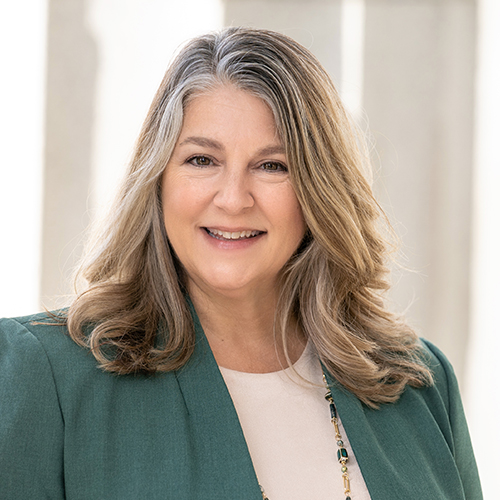A lot has changed since the State of Vermont first adopted its captive insurance legislation in 1981. Bell-bottom jeans fell in and out of style. Sally Ride became the first American woman to travel to space. The internet was invented and soon came to consume nearly every facet of our lives.
The times have changed and so too have the insurance exposures. Yet Vermont has remained a captive domicile committed to helping businesses navigate their most pressing insurance needs. When traditional carriers shy away from cyber or natural catastrophe exposures, captives are a tool to make sure businesses have the funds they need to become whole again after a claim. When you have an organization who understands its risks greater than anyone, and at the same time, is committed to funding for its risks, a captive insurance company established in a quality domicile becomes a valuable system for managing risk. The state is now the largest domicile with the most active captives licensed.

“Vermont has seen a lot over our 42 years. We have been exposed to new ideas and have taken those on when they feel appropriate, and we have experience with more challenging situations,” said Brittany Nevins, captive insurance economic development director, Vermont Department of Economic Development. “A lot of captives see Vermont as experienced and the best option for their unique needs.”
Its success is enviable. Many other states have tried to mimic Vermont’s captive laws because they built such a strong foundation for growth from the beginning. Over 40 years after the first legislation was passed, here’s a look back on its legacy — and its path toward continued growth.
A strong foundation to build from
When the Vermont legislature first drafted Vermont’s captive legislation in the early ’80s, they knew they wanted to build a framework that would last. They dedicated resources to creating a regulatory team to support businesses so that they could strike a balance between laws that enforced quality standards and those that offered support to businesses.

“The goal really was about quality, consistency, the ability to adapt effectively and employ an attitude of reasonableness and respect for the industry,” said Sandy Bigglestone, deputy commissioner of the captive insurance division within the Vermont Department of Financial Regulation.
That regulatory support is still in place today. Vermont reviews and revises its captive laws yearly.
Lawmakers don’t just work on captive bills in silos. Industry leaders like Bigglestone, Nevins, president of the Vermont Captive Insurance Association (VCIA) Kevin Mead, and captive owners themselves testify before legislatures to convey the priorities and needs of the industry.
“Our companies are making investments in Vermont, and our investment to them in return is to provide quality regulatory services,” Bigglestone said.
The regulatory team works with an in-house team of examiners to process licensing applications and aid companies with captives in any way they can. Businesses who domicile their captives in the state know that they need not worry about contacting regulators when they have questions or want to make changes to their business plans.
“There’s not this fear or worry that the regulators won’t understand what’s going on,” Nevins said. “This is the kind of culture where insureds can call when there’s bad news, but also when there’s good news, and to ask questions.”
The combination of knowledgeable regulators and competitive licensing fees and fair premium tax rates makes Vermont a top choice for companies looking to start captives. Many people come with unique insurance challenges because they know the team in Vermont will be able to handle it.
“People come to Vermont with interesting proposals,” Mead said. “People are coming in with effectively an insurance problem that they’re seeking to solve, and we’re not always the right place to do it, but we’re always the right place to get an opinion.”
A network of support
In addition to a supportive regulatory community, captives can find a strong network of service providers in Vermont who can help them manage their exposures and grow their businesses. Just four years after lawmakers passed the first captives legislation, VCIA’s founders started the organization to educate and grow the industry in Vermont.
“The VCIA puts a lot of time and effort into ensuring that education is really topnotch and cutting-edge,” Nevins said.
As the largest captives trade association in the world, VCIA attracts top talent to the area and helps them grow their careers. There are actuaries who can help captives set reserves, captives managers who can help assess exposures, lawyers who can help structure captive insurance companies, investment managers and bankers who can help grow the captive’s asset portfolios, auditors and tax advisors who can provide opinions, and a team of regulators who will provide the necessary oversight, all right in Vermont.
 “A lot of these folks are coming from places where they are experts in their industry and are not experts in insurance,” Mead said. “They need a captive manager, they need actuaries, they need accountants, they need lawyers, they need investment bankers. In this small community of 600,000 people, those things are available as a one-stop shop.”
“A lot of these folks are coming from places where they are experts in their industry and are not experts in insurance,” Mead said. “They need a captive manager, they need actuaries, they need accountants, they need lawyers, they need investment bankers. In this small community of 600,000 people, those things are available as a one-stop shop.”
VCIA is ensuring that this community of service providers is growing by touting the benefits of a career in captives. Earlier this year, VCIA launched the Vermont Captive Insurance Emerging Leaders initiative. The group of about 30 emerging captive insurance professionals and Vermonters hosts events and works with institutions of higher education to teach young people about the benefits of a career in the industry. This program will help grow and sustain the captives sector in Vermont for years to come.
“We’ve been connecting with colleges and universities and trying to get creative about raising awareness about the career path,” Nevins said. “We need to be proactive because the future of the captive industry as a whole depends on the accessibility of these essential services.”
A stable partner to help navigate evolving exposures
Vermont’s combination of dedicated regulators, first-rate service providers and industry knowledge has fueled its rise to the number one captive domicile in the world, and it has no plans to slow down. The captives industry in the state is prepared to continue adapting to changing times and insurance challenges.
“We’ve already proven we can be successful based on our history,” Bigglestone said. “The captive industry here and the marketplace can definitely adapt and advance as it needs to.”
One need only look to two contemporary challenges to see how Vermont is stepping up to address today’s risks: cyber and climate exposures.
“The captive insurance industry really can help fill gaps in the traditional market and help companies with their control over their coverage,” Nevins said. “We’ve seen that with cyber, and I think we’re seeing that with climate change as well. It’s an industry that’s inherently built on adaptation and innovation.”
Vermont is home to over half the captives of Fortune 100 and Dow 30 companies. It’s a top choice because of its unparalleled level of support and services. The program has stable leadership — Bigglestone is only the fourth deputy commissioner in 42 years — and they’re committed to keeping the program the best it can be, regardless of the ranking.
“We’re in this to make it last,” Bigglestone said. “I believe we are only winning if we are sticking to our core mission and developing and enhancing in all the right ways for continuing to retain and attract quality captive business to Vermont.”


